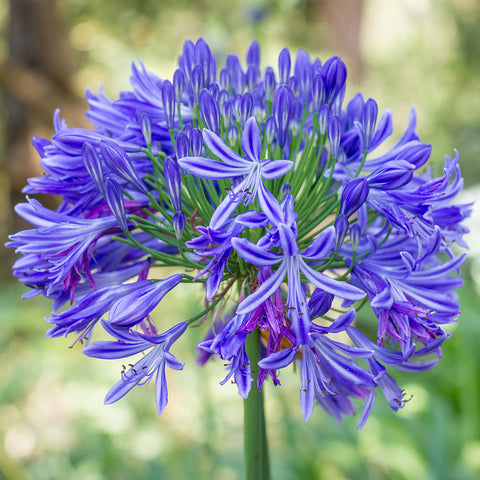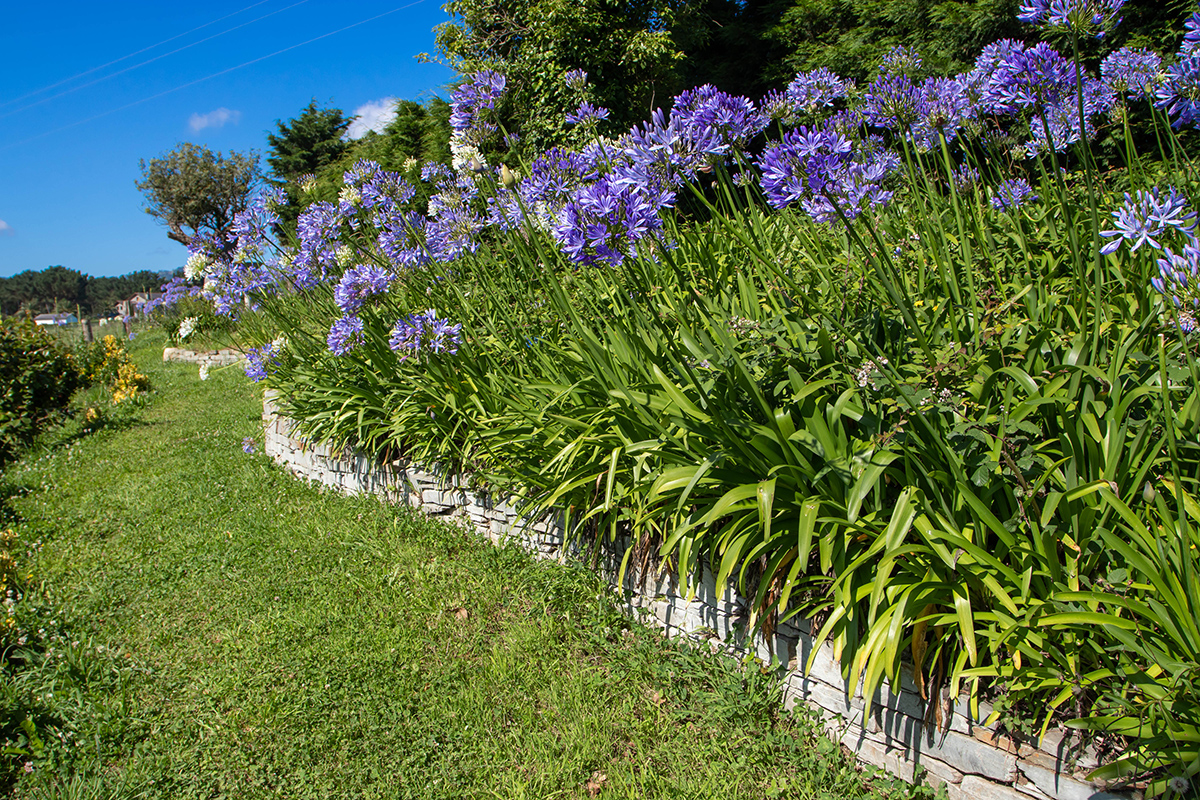Understanding the Art of Agapanthus Care: Crucial Steps for Healthy Growth and Dynamic Blooms
In the world of horticulture, the growing of agapanthus stands as a satisfying undertaking for those who seek to support these sophisticated flowering plants. From picking the best selection to understanding pruning strategies, the trip in the direction of cultivating thriving agapanthus plants is multifaceted and holds the essential to opening the complete capacity of these organic treasures.

Selecting the Right Agapanthus Range

When selecting the ideal Agapanthus range for your garden, consider aspects such as environment viability, flower shade, and development behavior. Furthermore, consider the environment in your region to make certain the Agapanthus variety you pick can grow in your specific problems. Understanding the growth habit of various Agapanthus ranges is critical for appropriate positioning within your garden.
Ideal Growing Problems
Considering the optimum environmental needs is crucial for effective Agapanthus growing. Agapanthus prospers in well-draining dirt with a slightly acidic to neutral pH level. When growing, pick an area that gets complete sunlight to partial color. In hotter climates, giving some afternoon color can stop scorching of the leaves. Agapanthus plants are delicate to cool temperature levels and should be safeguarded from frost during winter season.
To guarantee healthy development and lively blossoms, plant Agapanthus light bulbs at a depth of regarding 2-4 inches and room them 8-12 inches apart. Mulching around the base of the plants aids maintain dampness and subdues weed development.
Watering and Fertilizing Tips
Maintaining correct wetness degrees and supplying necessary nutrients are crucial elements in the care regimen for Agapanthus plants. It is crucial to strike an equilibrium when it comes to watering Agapanthus. These plants like continually wet soil yet are prone to root rot if overwatered. Throughout the expanding season, water deeply as soon as a week, making sure the soil is well-draining to avoid waterlogging. In hotter environments or during durations of drought, even more regular watering may be required to keep the dirt uniformly moist. Nevertheless, reduce watering in the winter to stop water logged conditions.
Feeding Agapanthus is important for promoting healthy and balanced growth and prolific flowers. Use a well balanced plant food, such as a 10-10-10 formula, in the very early springtime as brand-new growth emerges. Repeat this application every 6-8 weeks throughout the expanding season. Prevent extreme fertilizing, as it can result in lush foliage at the cost of blooms. Always comply with the supplier's guidelines for correct dilution and application techniques. By following these watering and fertilizing pointers, you can guarantee your Agapanthus plants thrive and produce vivid, resilient blossoms.
Trimming Methods for Agapanthus
Pruning Agapanthus plants at the proper times and with correct techniques is essential for maintaining their health and wellness and advertising optimal growth and flowering. The perfect time to trim Agapanthus is in late wintertime or very early spring before brand-new development arises. Begin by eliminating any type of dead or yellowing leaves near the base of the plant. Cut them as short as feasible without harming the emerging shoots.
For flowered stems, wait until the blossoms have perished and then trim them back to the base. This not only cleans up the plant's look however additionally urges the advancement of new flower buds. Deadheading spent flowers can also reroute the plant's energy right into generating more flowers as opposed to setting blog seeds. Nevertheless, if you wish to gather seeds for propagation, leave some flowers to mature and dry on the plant.
Keep in mind to make use of tidy, sharp devices to make precise cuts and minimize the threat of presenting conditions. Agapanthus. Normal trimming will certainly aid maintain your Agapanthus looking cool and healthy and balanced while making certain a bountiful screen of gorgeous flowers
Handling Typical Parasites and Diseases
After making certain appropriate pruning methods for Agapanthus, it is essential to deal with usual pests and illness that can affect the wellness and vigor of these plants. Agapanthus plants are typically hardy however can still succumb to particular issues. One usual pest that impacts Agapanthus is the Agapanthus gall midge. This small, orange fly lays its eggs in the foliage, resulting in altered growth and flower buds that fall short to open up. To fight this insect, trim and destroy any type of afflicted plant components and think about making use of insecticidal soap.
An additional typical problem is fungal fallen leave area, which offers as dark lesions on the fallen you could try here leaves. To protect against fungal diseases, make certain excellent air blood circulation around the plants, prevent official website above watering, and get rid of any kind of contaminated leaves without delay. Furthermore, Agapanthus plants can experience origin rot if they are grown in poorly draining dirt. To stop this, plant Agapanthus in well-draining dirt and avoid overwatering. By being attentive and taking prompt action versus illness and pests, you can aid your Agapanthus plants flourish and produce vivid flowers.

Conclusion
Finally, grasping the art of agapanthus treatment entails picking the best variety, offering optimal planting problems, correct watering and feeding, ideal pruning methods, and attending to common insects and conditions. By following these important actions, you can make certain healthy and balanced growth and lively blossoms for your agapanthus plants. Bear in mind to routinely keep track of and maintain your plants to promote their general well-being and longevity.
To ensure healthy development and vivid blossoms, plant Agapanthus bulbs at a depth of regarding 2-4 inches and room them 8-12 inches apart. By complying with these watering and fertilizing tips, you can ensure your Agapanthus plants thrive and produce vivid, durable blooms.
One usual parasite that impacts Agapanthus is the Agapanthus gall midge. In addition, Agapanthus plants can experience from root rot if they are planted in poorly draining pipes soil. By adhering to these necessary actions, you can guarantee healthy and balanced development and lively blooms for your agapanthus plants.